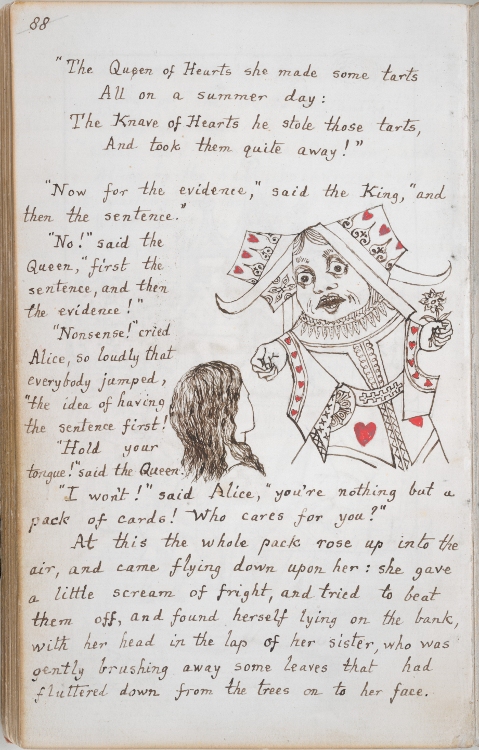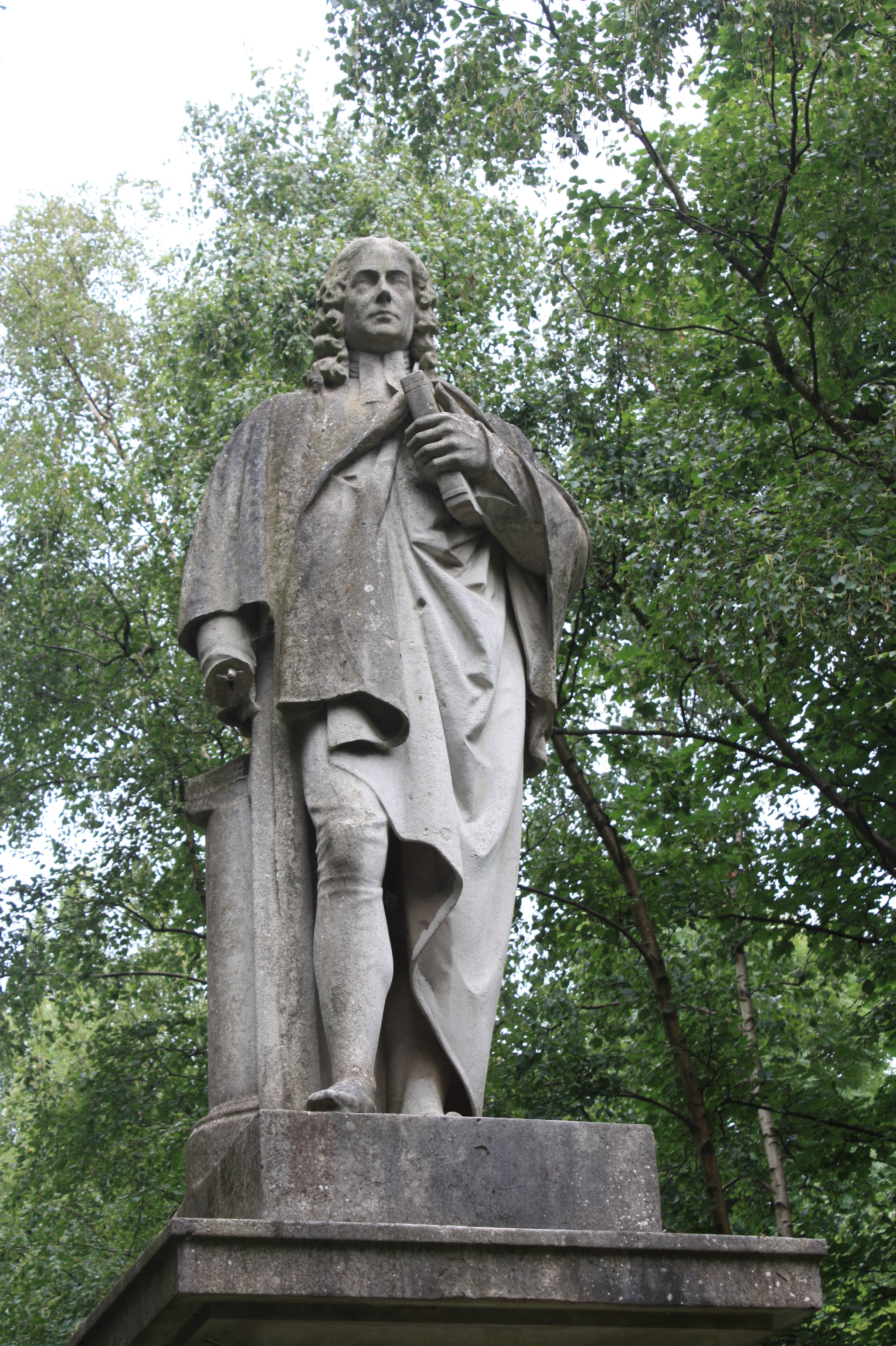|
'Tis The Voice Of The Lobster
"Tis the Voice of the Lobster" is a poem by Lewis Carroll that appears in Chapter 10 of his 1865 novel '' Alice's Adventures in Wonderland''. It is recited by Alice to the Mock Turtle and the Gryphon. Analysis Tis the Voice of the Lobster" is a parody A parody, also known as a spoof, a satire, a send-up, a take-off, a lampoon, a play on (something), or a caricature, is a creative work designed to imitate, comment on, and/or mock its subject by means of satiric or ironic imitation. Often its subj ... of " The Sluggard", a moralistic poem by Isaac Watts which was well known in Carroll's day. "The Sluggard" depicts the unsavory lifestyle of a slothful individual as a negative example. Carroll's lobster's corresponding vice is that he is weak and cannot back up his boasts, and is consequently easy prey. This fits the pattern of the predatory parody poems in the two Alice books. Text Published version As published in ''Alice's Adventures in Wonderland'' (1867): [After the Gryp ... [...More Info...] [...Related Items...] OR: [Wikipedia] [Google] [Baidu] |
Poetry
Poetry (derived from the Greek '' poiesis'', "making"), also called verse, is a form of literature that uses aesthetic and often rhythmic qualities of language − such as phonaesthetics, sound symbolism, and metre − to evoke meanings in addition to, or in place of, a prosaic ostensible meaning. A poem is a literary composition, written by a poet, using this principle. Poetry has a long and varied history, evolving differentially across the globe. It dates back at least to prehistoric times with hunting poetry in Africa and to panegyric and elegiac court poetry of the empires of the Nile, Niger, and Volta River valleys. Some of the earliest written poetry in Africa occurs among the Pyramid Texts written during the 25th century BCE. The earliest surviving Western Asian epic poetry, the '' Epic of Gilgamesh'', was written in Sumerian. Early poems in the Eurasian continent evolved from folk songs such as the Chinese ''Shijing'', as well as religious hymns (the Sanskr ... [...More Info...] [...Related Items...] OR: [Wikipedia] [Google] [Baidu] |
Lewis Carroll
Charles Lutwidge Dodgson (; 27 January 1832 – 14 January 1898), better known by his pen name Lewis Carroll, was an English author, poet and mathematician. His most notable works are ''Alice's Adventures in Wonderland'' (1865) and its sequel ''Through the Looking-Glass'' (1871). He was noted for his facility with word play, logic, and fantasy. His poems ''Jabberwocky'' (1871) and ''The Hunting of the Snark'' (1876) are classified in the genre of literary nonsense. Carroll came from a family of high-church Anglicanism, Anglicans, and developed a long relationship with Christ Church, Oxford, where he lived for most of his life as a scholar and teacher. Alice Liddell, the daughter of Christ Church's dean Henry Liddell, is widely identified as the original inspiration for ''Alice in Wonderland'', though Carroll always denied this. An avid puzzler, Carroll created the word ladder puzzle (which he then called "Doublets"), which he published in his weekly column for ''Vanity Fair ( ... [...More Info...] [...Related Items...] OR: [Wikipedia] [Google] [Baidu] |
Alice's Adventures In Wonderland
''Alice's Adventures in Wonderland'' (commonly ''Alice in Wonderland'') is an 1865 English novel by Lewis Carroll. It details the story of a young girl named Alice who falls through a rabbit hole into a fantasy world of anthropomorphic creatures. It is seen as an example of the literary nonsense genre. The artist John Tenniel provided 42 wood-engraved illustrations for the book. It received positive reviews upon release and is now one of the best-known works of Victorian literature; its narrative, structure, characters and imagery have had widespread influence on popular culture and literature, especially in the fantasy genre. It is credited as helping end an era of didacticism in children's literature, inaugurating a new era in which writing for children aimed to "delight or entertain". The tale plays with logic, giving the story lasting popularity with adults as well as with children. The titular character Alice shares her given name with Alice Liddell, a girl Carrol ... [...More Info...] [...Related Items...] OR: [Wikipedia] [Google] [Baidu] |
Alice (Alice's Adventures In Wonderland)
Alice is a fictional character and the main protagonist of Lewis Carroll's children's novel ''Alice's Adventures in Wonderland'' (1865) and its sequel, '' Through the Looking-Glass'' (1871). A child in the mid- Victorian era, Alice unintentionally goes on an underground adventure after accidentally falling down a rabbit hole into Wonderland; in the sequel, she steps through a mirror into an alternative world. The character originated in stories told by Carroll to entertain the Liddell sisters while rowing on the Isis with his friend Robinson Duckworth, and on subsequent rowing trips. Although she shares her given name with Alice Liddell, scholars disagree about the extent to which she was based upon Liddell. Characterized by Carroll as "loving and gentle", "courteous to all", "trustful", and "wildly curious", Alice has been variously seen as clever, well-mannered, and sceptical of authority, although some commentators find more negative aspects of her personality. Her ap ... [...More Info...] [...Related Items...] OR: [Wikipedia] [Google] [Baidu] |
Mock Turtle
The Mock Turtle is a fictional character devised by Lewis Carroll from his popular 1865 book ''Alice's Adventures in Wonderland''. Its name is taken from a dish that was popular in the Victorian period, mock turtle soup. ''Alice's Adventures in Wonderland'' Carroll enjoyed such puns on Victorian fashions and etiquette, and showed this frequently. The description and drawing by John Tenniel gives comedic value to the Mock Turtle, as he is clearly an assemblage of creatures, therefore not a real turtle as his name rightly suggests. Alice encounters the Mock Turtle with the Gryphon. The Mock Turtle is a very melancholic character, it is thought because he used to be a real turtle. He tells Alice his history of going to school in the sea. He says his teacher was an old sea turtle called Tortoise and when Alice asks him why he was called Tortoise if he was a turtle the Mock Turtle answers, "We called him tortoise because he taught us!" ("tortoise" and "taught us" both being prono ... [...More Info...] [...Related Items...] OR: [Wikipedia] [Google] [Baidu] |
Gryphon (Alice's Adventures In Wonderland)
The Gryphon is a fictional character devised by Lewis Carroll in the popular 1865 book ''Alice's Adventures in Wonderland''. True to the conventional view of a griffin, he has the head, talons, and wings of an eagle and the body of a lion. Role and personality The Gryphon appears to be somewhat overbearing and dismissive of the obsessions and dismays of other characters, such as the Mock Turtle's sorrow and the Queen of Hearts' executions, neither of which (according to the Gryphon) have any basis in fact. He speaks with a slightly ungrammatical Cockney-like accent and makes demands of the Mock Turtle, which are obeyed despite the latter creature's implicit objections. In addition, he is prone to making cough-like sounds written as "Hjckrrh!", which seem to have little meaning and may be involuntary. In ''Alice's Adventures in Wonderland'', the Gryphon features with the Mock Turtle in Chapter 9, " The Mock Turtle's Story", Chapter 10, " The Lobster Quadrille", and briefly at t ... [...More Info...] [...Related Items...] OR: [Wikipedia] [Google] [Baidu] |
Parody
A parody, also known as a spoof, a satire, a send-up, a take-off, a lampoon, a play on (something), or a caricature, is a creative work designed to imitate, comment on, and/or mock its subject by means of satiric or ironic imitation. Often its subject is an original work or some aspect of it (theme/content, author, style, etc), but a parody can also be about a real-life person (e.g. a politician), event, or movement (e.g. the French Revolution or 1960s counterculture). Literary scholar Professor Simon Dentith defines parody as "any cultural practice which provides a relatively polemical allusive imitation of another cultural production or practice". The literary theorist Linda Hutcheon said "parody ... is imitation, not always at the expense of the parodied text." Parody may be found in art or culture, including literature, music, theater, television and film, animation, and gaming. Some parody is practiced in theater. The writer and critic John Gross observes in his ''Oxf ... [...More Info...] [...Related Items...] OR: [Wikipedia] [Google] [Baidu] |
The Sluggard (Watts)
The Sluggard may refer to: * a bronze statue of Giuseppe Valona, by Lord Frederic Leighton Frederic Leighton, 1st Baron Leighton, (3 December 1830 – 25 January 1896), known as Sir Frederic Leighton between 1878 and 1896, was a British painter, draughtsman, and sculptor. His works depicted historical, biblical, and classical subjec ... * a moralistic poem by Isaac Watts: see wikisource:The Sluggard (Watts) {{DEFAULTSORT:Sluggard, The ... [...More Info...] [...Related Items...] OR: [Wikipedia] [Google] [Baidu] |
Isaac Watts
Isaac Watts (17 July 1674 – 25 November 1748) was an English Congregational minister, hymn writer, theologian, and logician. He was a prolific and popular hymn writer and is credited with some 750 hymns. His works include " When I Survey the Wondrous Cross", "Joy to the World", and " Our God, Our Help in Ages Past". He is recognized as the "Godfather of English Hymnody"; many of his hymns remain in use today and have been translated into numerous languages. Life Watts was born in Southampton, Hampshire, England, in 1674 and was brought up in the home of a committed religious nonconformist; his father, also Isaac Watts, had been incarcerated twice for his views. Watts had a classical education at King Edward VI School, Southampton, learning Latin, Greek, and Hebrew. Watts displayed a propensity for rhyme from an early age. He was once asked why he had his eyes open during prayers, to which he responded: He received corporal punishment for this, to which he cried: Watt ... [...More Info...] [...Related Items...] OR: [Wikipedia] [Google] [Baidu] |
Martin Gardner
Martin Gardner (October 21, 1914May 22, 2010) was an American popular mathematics and popular science writer with interests also encompassing scientific skepticism, micromagic, philosophy, religion, and literatureespecially the writings of Lewis Carroll, L. Frank Baum, and G. K. Chesterton.Martin (2010) He was also a leading authority on Lewis Carroll. '' The Annotated Alice'', which incorporated the text of Carroll's two Alice books, was his most successful work and sold over a million copies. He had a lifelong interest in magic and illusion and in 1999, MAGIC magazine named him as one of the "100 Most Influential Magicians of the Twentieth Century". He was considered the doyen of American puzzlers. He was a prolific and versatile author, publishing more than 100 books. Gardner was best known for creating and sustaining interest in recreational mathematicsand by extension, mathematics in generalthroughout the latter half of the 20th century, principally through his " ... [...More Info...] [...Related Items...] OR: [Wikipedia] [Google] [Baidu] |

.jpg)





